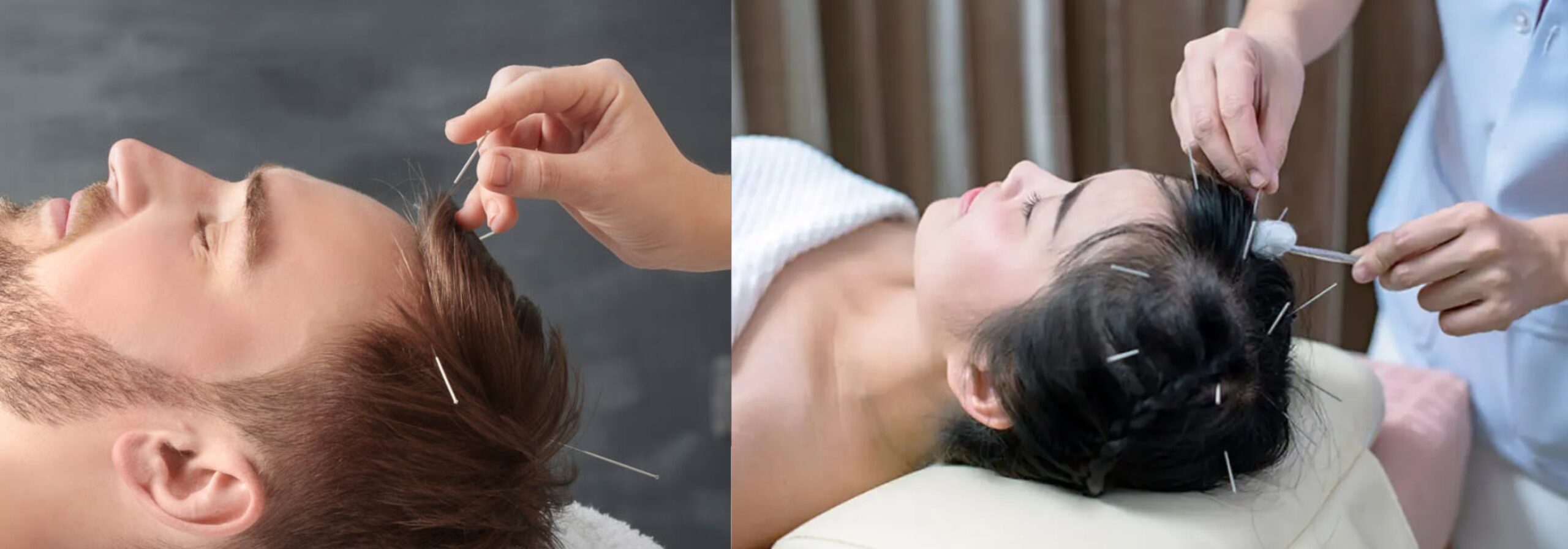
Scalp Acupuncture: A Modern Approach to Healing the Brain and Body
Introduction
Scalp acupuncture is a specialized form of acupuncture that involves inserting very fine needles into specific areas on the scalp to treat neurological and systemic disorders. Unlike traditional body acupuncture, which is based on meridian theory, scalp acupuncture combines Traditional Chinese Medicine (TCM) principles with modern neuroanatomy. It is widely used to treat conditions involving the central nervous system, such as stroke recovery, paralysis, Parkinson’s disease, and multiple sclerosis.
Developed in the 20th century in China, scalp acupuncture is now practiced around the world, often as a complementary therapy in rehabilitation clinics and integrative medicine settings.
How Scalp Acupuncture Works
The scalp is mapped into various functional zones, each corresponding to a region of the brain responsible for motor, sensory, visual, speech, or balance functions. By stimulating these zones, scalp acupuncture aims to activate specific areas of the cerebral cortex and improve communication between the brain and the body.
Key characteristics of scalp acupuncture include:
Precise Needle Placement: Needles are inserted horizontally or at shallow angles into specific zones of the scalp, typically 1–2 cm under the skin.
Minimal Discomfort: The procedure is generally well tolerated, and patients can remain awake, alert, and even move during treatment.
Neurological Focus: Unlike traditional acupuncture points, these zones are aligned with brain functions such as movement, speech, and coordination.
The therapy is often combined with rehabilitation exercises during or immediately after treatment to reinforce brain-body connection and functional recovery.
Benefits of Scalp Acupuncture
1. Stroke Rehabilitation
Scalp acupuncture is one of the most commonly used treatments for patients recovering from stroke. It helps restore motor functions, reduce muscle spasticity, improve speech, and enhance mobility by stimulating damaged areas of the brain and promoting neuroplasticity.
2. Improved Motor Function
Conditions such as paralysis, Parkinson’s disease, and multiple sclerosis respond well to scalp acupuncture. It can reduce tremors, improve muscle coordination, and restore voluntary movement in limbs and facial muscles.
3. Pain Management
Scalp acupuncture has shown effectiveness in managing chronic pain, including migraines, trigeminal neuralgia, and neuropathic pain, by modulating brain pathways involved in pain perception.
4. Cognitive and Speech Improvement
In patients with aphasia, Alzheimer’s disease, or brain injuries, scalp acupuncture can support improvements in speech, memory, concentration, and mental clarity by targeting the language and memory areas of the brain.
5. Balance and Coordination
By stimulating the cerebellum-related zones, scalp acupuncture helps improve balance, gait, and body coordination, especially in patients with vestibular disorders or post-stroke dizziness.
6. Emotional and Mental Health Support
Scalp acupuncture may reduce anxiety, depression, and stress-related symptoms by affecting the limbic system and regulating neurotransmitters, leading to a calmer and more balanced mental state.
Conclusion
Scalp acupuncture is a powerful therapeutic technique that bridges Eastern wisdom and modern neuroscience. It offers a safe, non-invasive, and often effective treatment for complex neurological and systemic conditions, especially those that are resistant to conventional therapies. When performed by a trained practitioner, scalp acupuncture can help patients regain function, relieve symptoms, and enhance their overall quality of life.
